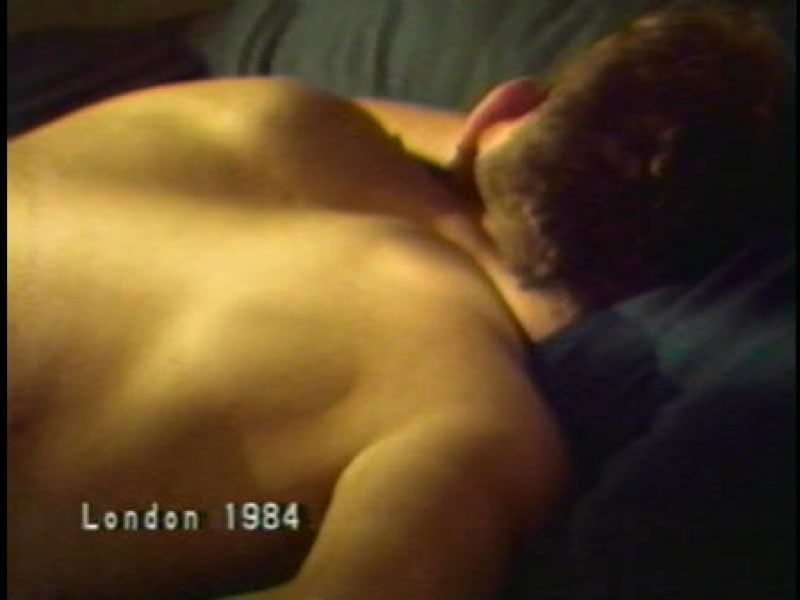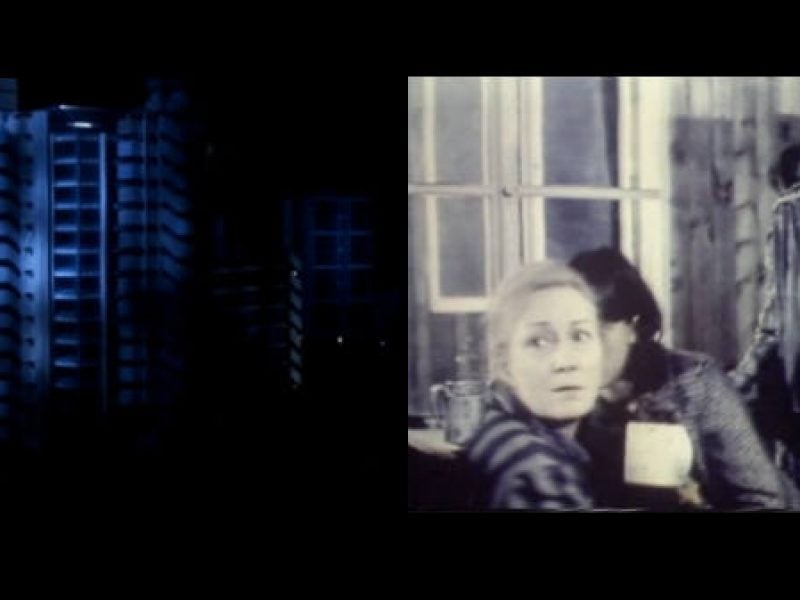Television was one of the common enemies that unified diverse oppositional film practices in the early 1970s. i
This productive antagonism was based on a number of political, theoretical and pragmatic concerns. Television, for many on the Left, was irredeemably conformist, instinctively opposed to all forms of radical culture and politics. By excluding independent film and video, television fostered ideas of a public that was normative and seemingly beyond contention – its formulation could be understood, in the language of the international Left, as ‘hegemonic’ (Gramsci), ‘ideological’ (Althusser) or as the ‘pseudo-public sphere’ (Kluge).ii In an article published in Screen in 1972, Nicholas Garnham summed up the confluence of state and class power on the small screen:
In bourgeois parliamentary democracies TV systems are, in general, committed to ‘objectivity’ and ‘impartiality’. Like the legal system, they support the ruling class by appearing to be above and beyond politics. (Garnham, 1972, p.110)
The practical aspects of television as a hegemonic force were also acutely felt by independent film-makers. On 9 November 1974, a group of around fifty independent film-makers from a wide range of backgrounds met at the Royal College of Art in London in order to establish themselves as the Independent Film-maker’s Association (IFA). According to its own historical account of this foundational moment, the IFA had been formed in response to a programme made for the BBC on ‘Independent Cinema’ presented by Melvyn Bragg, which they felt had radically misrepresented the works (it had apparently featured brief snippets of experimental film works lasting between thirty seconds and five minutes, and had censored more radical works) (IFA, 1976).iii
The IFA had big ambitions: it wanted to infiltrate and explode the cloistered environment of British broadcasting, which was at the time restricted to just three channels controlled by patriarchal (BBC1, BBC2) and commercial interests (ITV). The IFA immediately set out to campaign for the BBC to broadcast whole films by British independent film-makers as part of a series on independent cinema. A delegation of IFA members, including Malcolm Le Grice, Margaret Dickinson, Schlacke (of Cinema Action) and James Scott (of Berwick Street Film Collective) were assembled to speak with the BBC. They were firmly rebuffed:
The response of the BBC to this suggestion was unequivocal. Aubrey Singer, Director of Programming for BBC2, stated, ‘I’m not having that kind of film television’. Needless to say, we did not respond by pointing out that the BBC is a public corporation. (IFA, 1976)
If the BBC proved arrogant and unresponsive, a second path was open to the IFA. Discussions about the possibility of creating a fourth television channel – provisionally called ITV2 – had been taking place from 1970 to 1972. Opposing forces had begun to line up, with ITV companies on one side and a coalition of disaffected producers and media experts called the ‘TV4 Campaign’ on the other flank (Blanchard and Morley, 1982, pp.7–9). The result was the establishment of a committee of enquiry into broadcasting in Britain led by Noel Annan. The IFA would thus turn to the Annan Committee as a way of going above the heads of the grandees of the BBC. In 1975, the IFA wrote to Annan:
Only with restructuring could the broadcasting system, and the national culture as a whole, benefit from the rich and varied contribution that, we feel, the independents can make through the media of television… (IFA, 1975 sec. 1)
Independent film-makers could call upon a number of antecedents in requesting broadcasting space: in Germany and the Netherlands, television channels and funds from broadcasting had already begun to support independent film practices.iv The possibility of restructuring the relationship between television and film might thus allow for the production of new independent films that would enrich both cinemas and television. The IFA also claimed that such a channel, properly constituted by law to support independent producers, would help to redress an imbalance between film and television, since ‘film makes a substantial contribution to television but tv [sic] little to film’ (IFA, 1975 sec. 6). Furthermore, television could (according to the IFA) be used to foster an audience for the alternative cinema:
Not only does tv [sic] fail to promote film culture in practical ways but it even fails to contribute to serious film criticism. Film programmes tend to be restricted to showing trailer clips from latest releases padded out with ‘star’ interviews and publicity film provided by the major film companies. This does nothing to broaden audience interest and knowledge of film in general – a situation especially damaging for the independent who needs an informed and critical climate in which to flourish. (IFA, 1975 sec. 6)
These quotes reveal some aspects of the complex relationships between the politics of independent film and television at this time. There is, for example, an implicit disregard for television as a serious medium in the IFA’s desire to utilise television as both a cash cow and a means of encouraging attendance at alternative cinemas. Yet, it was also clear to many in the 1970s that the mass media had a liberatory potential. In an influential article published in 1970 Hans Magnus Enzensberger had criticised the existing ‘theory of manipulation in the Left’, and suggesting that radicals need to engage in the dirty business of mass communication – because ‘… fear of handling shit is a luxury a sewerman cannot necessarily afford’ (Enzensberger, 1970).v
The gamble seemed worth it: the form that television had assumed in the nation was that of a public address that could be interrupted and turned on its head. By insisting that television fund independent works while insisting on retaining editorial control, film-makers were seeking to alter the terms of engagement in order to restructure the bourgeois public sphere into a socialist one. The practical outcome, a decade later, was rather more compromised: the establishment of Channel 4 in 1982 was a deeply ambiguous affair, for while it opened up funding channels for independent film and video, the public sphere that it opened onto was a neo-liberal, Thatcherite one. But this was a factor that could not easily be anticipated in the early 1970s, when the victory of socialism was a latent and real promise.
Colin Perry is an art writer and editor. He has written for a number of publications including Art Monthly and Frieze, and is the Reviews Editor of the Moving Image Review & Art Journal.
i There were other structural and social formations that alternative practices were united in seeking to undermine – class and capitalism, for example. More specifically, however were the practicalities of distribution. The IFA also campaigned to change the direction and politics of the BFI Production Board.
ii Antonio Gramsci’s writings were a key source for New Left Review writers Tom Nairn and Perry Anderson in the 1960s, although his writings were not translated until the 1970s. Some of Louis Althusser writing was translated into English in the 1960s and he was a key reference for writers in the journal Screen in the 1970s, particularly following Ben Brewster’s appointment as editor in 1974. Kluge and Negt’s important 1972 text Öffentlichkeit und Erfahrung. Zur Organisationsanalyse von bürgerlicher und proletarischer Öffentlichkeit was only translated into English in 1993 as Public Sphere and Experience: Toward an Analysis of the Bourgeois and Proletarian Public Sphere (1993) trans. Labyani et al, University of Minnesota Press. Excerpts are available in October: The Second Decade, 1986–1996 (1997) ed Krauss et al., MIT. pp. 226–247.
iii It is unclear which programme the IFA document refers to. Bragg presented the series ‘2nd House’ during this period (1973-1976), so it is possible that the programme was shown in that slot, although the BBC and BFI listings for the programme do not disclose any reference to ‘Independent Cinema’.
iv For example, from 1974 West Germany’s principal broadcasters, ARD and ZDF, were required to redirect profits from television for German film production.
v Enzenberger’s analysis of the media must be distinguished from the technological determinism that Raymond Williams had noted in Marshall McLuhan’s writings: see Williams, R. (2003) Television: Technology and Cultural Form. 3rd edition. Routledge. Enzenberger was an important reference point for Claire Johnston, one of the principal theorists writing in the UK of the counter-cinema (the other being Peter Wollen). See: Johnston, C. & Willemen, P. (1975) Brecht in Britain: The Independent Political Film (on The Nightdeaners). Screen. 16 (4), 101–118.
Bibliography
Blanchard, S. & Morley, D. (1982) What’s This Channel Four?: An Alternative Report. London: Comedia Publishing Group.
Enzensberger, H. M. (1970) Constituents of a Theory of the Media. New Left Review. (64)
Garnham, N. (1972) TV Documentary and Ideology. Screen. [Online] 13 (2), 109–115.
IFA (1976) Independent Film-making in the 70s: An introduction discussion paper from the Organising Committe of the IFA Conference held in May 1977.
IFA (1975) The Draft Submission to the Annan Committee.





